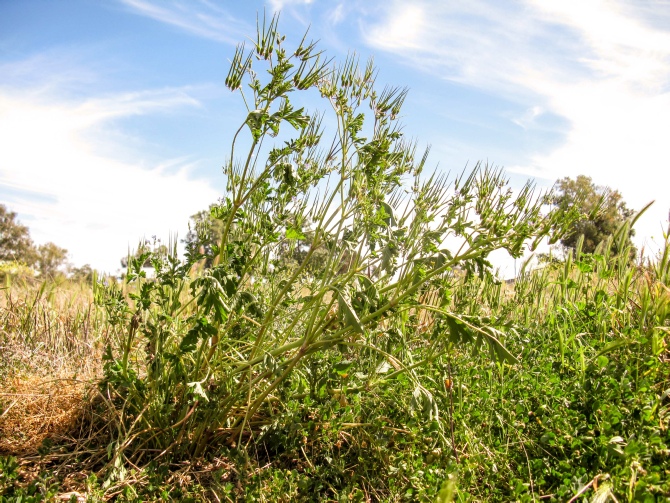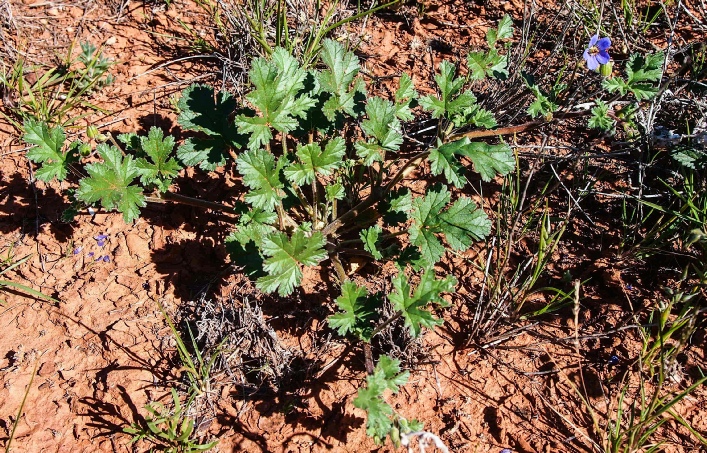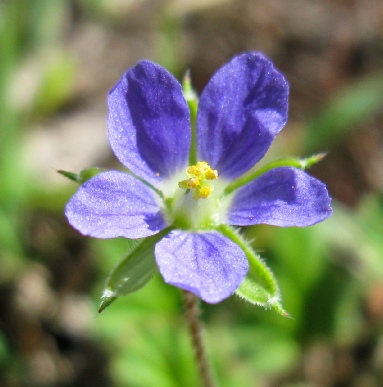Erodium
and California
This site was created and is maintained by Benjamin Coultrup.
Photos all ©Benjamin Coultrup unless otherwise indicated, 1984-
Clade I, Subclade 1
Subgenus Erodium
Clade I, Subclade 2
Subgenus Barbata
Clade II, Subclade 3
Clade II, Subclade 4
-
-
Erodium crinitum Carolin
A sprawling or partly erect perennial with a thick, fleshy rootstock. Plants vary from robust to thin tiny single stems, as usual in these ‘weedy’ species.
Stems may reach 0.5m, 1 to several from the crown, with stiff white hairs.
Leaves: not very large – to 40mm long, 30mm wide – triangular in outline, with two basal lobes cut to the midrib; the edge crenate, lobes rounded; the nodal bracts and leaf stipules acute.

Inflorescence: Umbels (1-
Fruit: Mericarp covered in long white simple hairs; foveole -
2n=40

Distribution: endemic to Australia – central and east ; extra tropical southern and eastern Australia, as far north as the Musgrave Ranges in Queensland; generally in open habitats.
Notes: plants with beaks longer than 70mm are likely to be E. cygnorum

Erodium crinitum. Photo credit: Harry Rose -
Erodium crinitum. Photo credit -
Erodium crinitum. Photo credit: Harry Rose from South West Rocks, Australia -